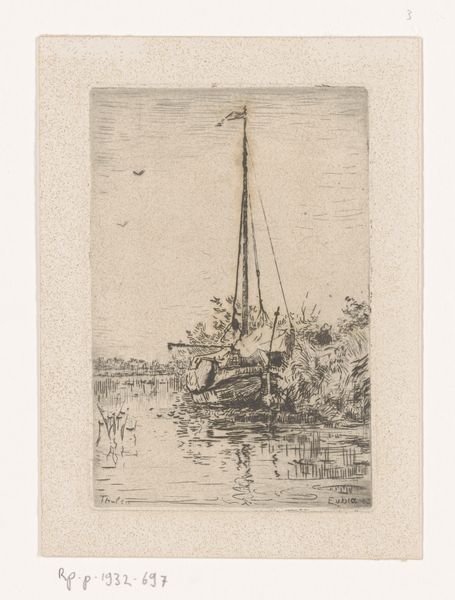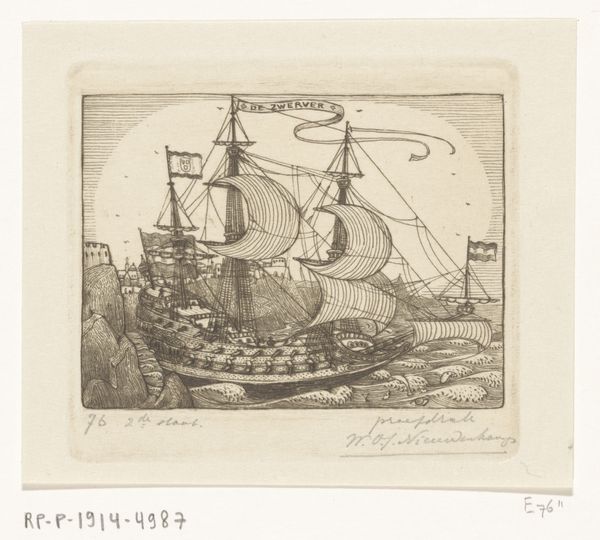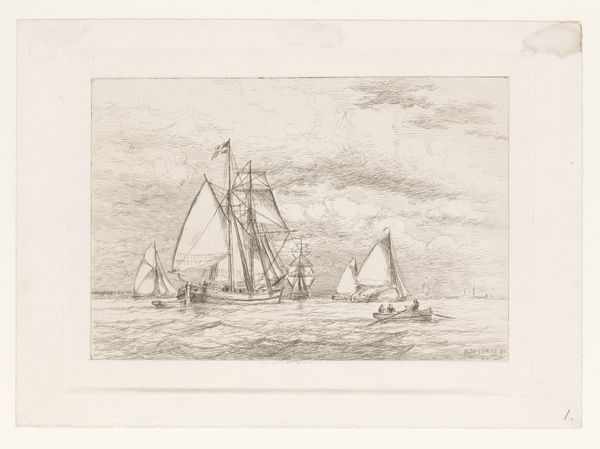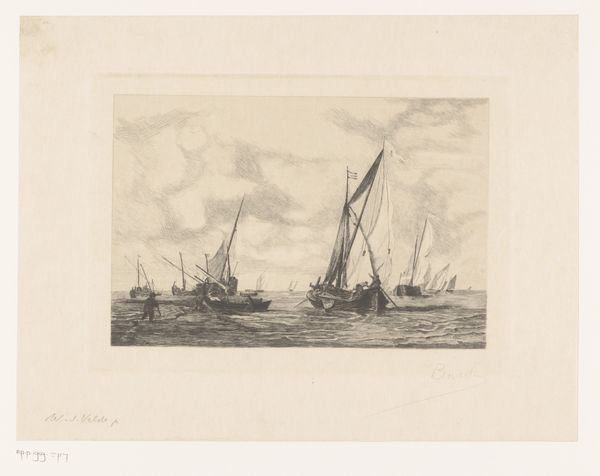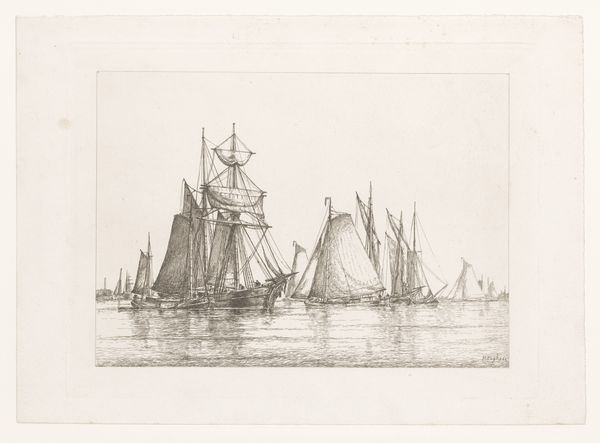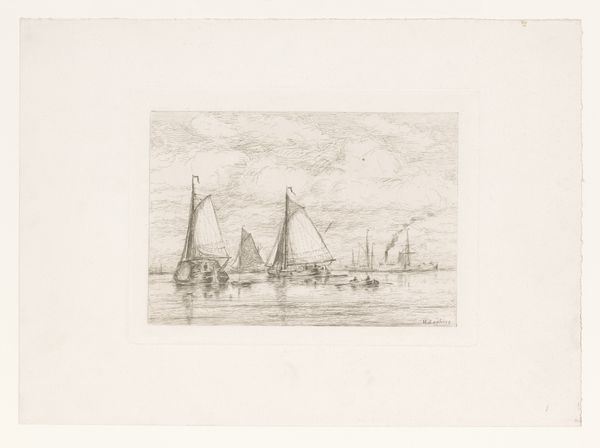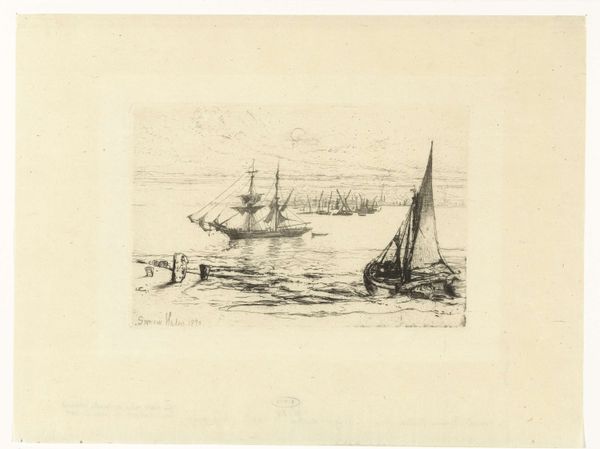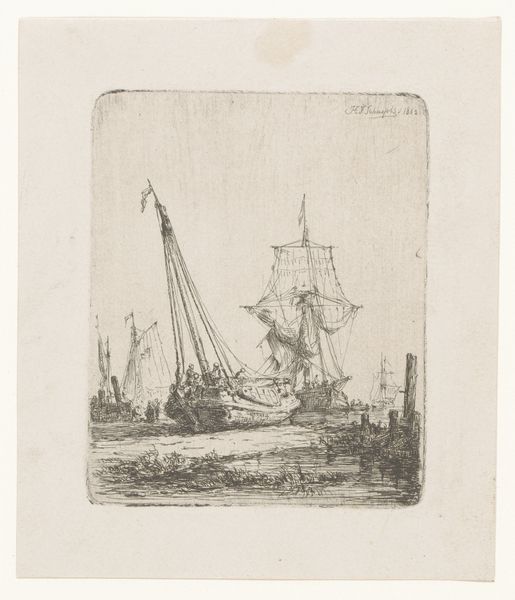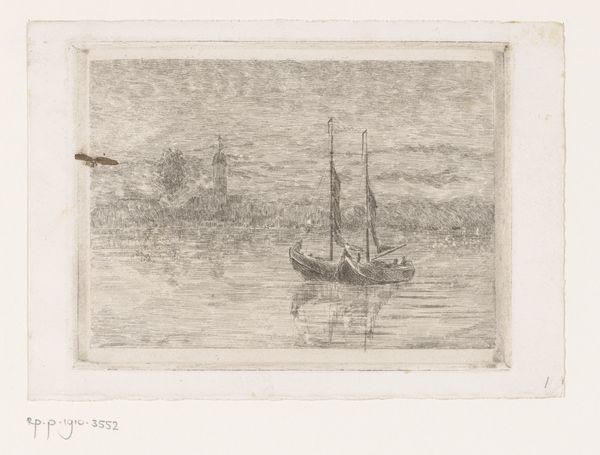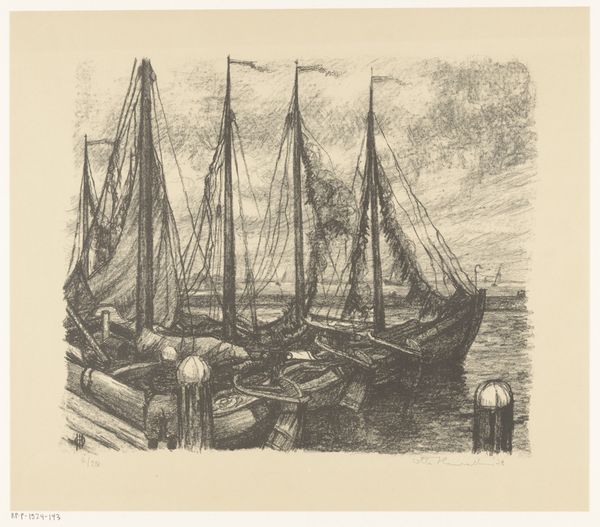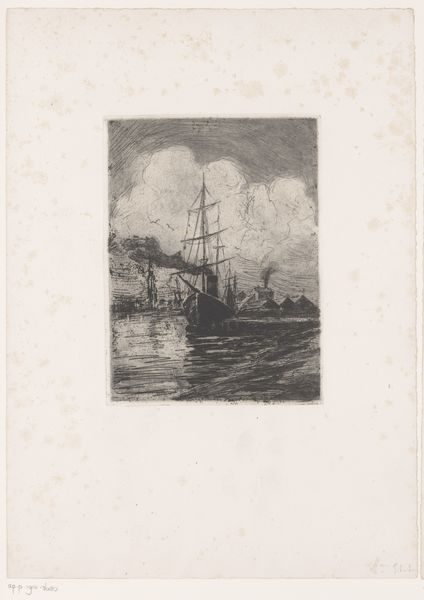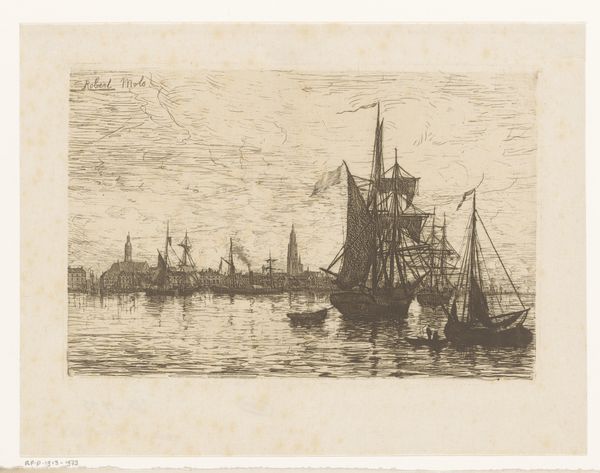
Schepen in een baai aan de oostkust van Lombok Possibly 1914 - 1917
0:00
0:00
drawing, print, engraving
#
drawing
#
narrative-art
# print
#
asian-art
#
old engraving style
#
landscape
#
engraving
Dimensions: height 127 mm, width 125 mm
Copyright: Rijks Museum: Open Domain
Curator: Here we have Wijnand Otto Jan Nieuwenkamp's "Schepen in een baai aan de oostkust van Lombok," a drawing and engraving likely from the 1914-1917 period. Editor: It has such a distinct, almost folksy style! What's your interpretation of it, especially given its context? Curator: Looking at it, I immediately consider Dutch colonialism. Nieuwenkamp traveled extensively in the Dutch East Indies. His artistic gaze, though perhaps well-intentioned, inevitably reflects the power dynamics of that era. How does seeing the boats and coastal life rendered in this 'old engraving style' impact your perception of Lombok at that time? Does it feel romanticized? Editor: It does feel somewhat… distant. I guess I'm wondering if it unintentionally exoticizes the scene. It feels more like a depiction *of* Lombok rather than a story *from* Lombok. Curator: Precisely! Consider the figures—are they rendered as individuals, or more as types? What narratives are prioritized, and whose voices are perhaps absent? Also, what is the implication of this work now, as cultural production with colonial origins, when Asian art is shown in a Western institution? Editor: I see what you mean. Looking closely, the people seem less detailed than the boats. It makes me question the artist's focus. It's making me rethink how I view landscapes made during periods of colonial expansion. Curator: It’s about uncovering those layers, challenging the surface beauty to reveal the underlying power structures that shaped its creation. Editor: Thanks! I had only considered its artistic merit; I realize it also acts as a document—revealing power relationships through subject, composition and display.
Comments
No comments
Be the first to comment and join the conversation on the ultimate creative platform.
